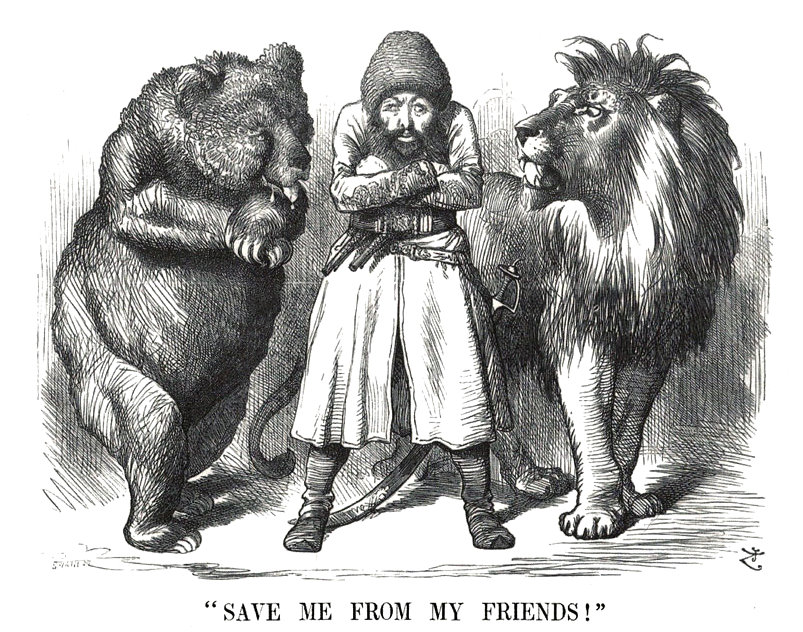|
Venona Project
The Venona project was a United States counterintelligence program initiated during World War II by the United States Army's Signal Intelligence Service (later absorbed by the National Security Agency), which ran from February 1, 1943, until October 1, 1980. It was intended to decrypt messages transmitted by the intelligence agencies of the Soviet Union (e.g. the NKVD, the KGB, and the GRU). Initiated when the Soviet Union was an ally of the US, the program continued during the Cold War, when the Soviet Union was considered an enemy. During the 37-year duration of the Venona project, the Signal Intelligence Service decrypted and translated approximately 3,000 messages. The signals intelligence yield included discovery of the Cambridge Five espionage ring in the United Kingdom and Soviet espionage of the Manhattan Project in the U.S. (known as Project Enormous). Some of the espionage was undertaken to support the Soviet atomic bomb project. The Venona project remained secret for ... [...More Info...] [...Related Items...] OR: [Wikipedia] [Google] [Baidu] |
Counterintelligence
Counterintelligence is an activity aimed at protecting an agency's intelligence program from an opposition's intelligence service. It includes gathering information and conducting activities to prevent espionage, sabotage, assassinations or other intelligence activities conducted by, for, or on behalf of foreign powers, organizations or persons. Many countries will have multiple organisations focusing on a different aspect of counterintelligence, such as domestic, international, and counter-terrorism. Some states will formalise it as part of the police structure, such as the United States' Federal Bureau of Investigation (FBI). Others will establish independent bodies, such as the United Kingdom's MI5, others have both intelligence and counterintelligence grouped under the same agency, like the Canadian Security Intelligence Service (CSIS). History Modern tactics of espionage and dedicated government intelligence agencies developed over the course of the late-19th ce ... [...More Info...] [...Related Items...] OR: [Wikipedia] [Google] [Baidu] |
Donald Duart Maclean
Donald Duart Maclean (; 25 May 1913 – 6 March 1983) was a British diplomat who conveyed government secrets to the Soviet Union. As an undergraduate, Maclean openly proclaimed his left-wing views, and was recruited into the Soviet intelligence service, then known as the NKVD. He entered the Civil Service and in 1938, he was made Third Secretary at the Paris embassy. He then served in London and was sent to Washington, D.C. from 1944 to 1948, achieving promotion to First Secretary. He was posted to Egypt and then was appointed head of the American Department in the Foreign Office. The Soviets helped Maclean to defect to Moscow in 1951. In Moscow, Maclean worked as a specialist on British policy and relations between the Soviet Union and NATO. He died there on 6 March 1983. Childhood and school Born in Marylebone, London, Donald Duart Maclean was the son of Sir Donald Maclean and Gwendolen Margaret Devitt. His father was chosen as chairman of the rump of the 23 independent M ... [...More Info...] [...Related Items...] OR: [Wikipedia] [Google] [Baidu] |
Carter W
Carter(s), or Carter's, Tha Carter, or The Carter(s), may refer to: Geography United States * Carter, Arkansas, an unincorporated community * Carter, Mississippi, an unincorporated community * Carter, Montana, a census-designated place * Carter, Oklahoma, a town * Carter, South Dakota, an unincorporated community * Carter, Texas, a census-designated place * Carter, Forest County, Wisconsin, an unincorporated community * Carter, Iron County, Wisconsin, an unincorporated community * Carter, Wyoming, a census-designated place * Carters, Georgia, an unincorporated community * Carter County (other) Elsewhere * Carter Islands, in Nunavut, Canada * Carter Road Promenade, former name of Sangeet Samrat Naushad Ali Marg in Mubai, India People and fictional characters * Carter (name), a surname and a given name, including a list of people and fictional characters * Carter (artist), American artist and film director John Carter (born 1970) * Carter, someone whose occupati ... [...More Info...] [...Related Items...] OR: [Wikipedia] [Google] [Baidu] |
Cryptanalysis
Cryptanalysis (from the Greek ''kryptós'', "hidden", and ''analýein'', "to analyze") refers to the process of analyzing information systems in order to understand hidden aspects of the systems. Cryptanalysis is used to breach cryptographic security systems and gain access to the contents of encrypted messages, even if the cryptographic key is unknown. In addition to mathematical analysis of cryptographic algorithms, cryptanalysis includes the study of side-channel attacks that do not target weaknesses in the cryptographic algorithms themselves, but instead exploit weaknesses in their implementation. Even though the goal has been the same, the methods and techniques of cryptanalysis have changed drastically through the history of cryptography, adapting to increasing cryptographic complexity, ranging from the pen-and-paper methods of the past, through machines like the British Bombes and Colossus computers at Bletchley Park in World War II, to the mathematically advanced ... [...More Info...] [...Related Items...] OR: [Wikipedia] [Google] [Baidu] |
Gene Grabeel
Gene Grabeel (June 5, 1920 – January 30, 2015) was an American mathematician and Cryptanalysis, cryptanalyst who founded the Venona project. Early life Grabeel was born on June 5, 1920, in Rose Hill, Lee County, Virginia, where she grew up; her mother raised chickens and her father farmed tobacco. She graduated from Mars Hill College and Farmville State Teachers College and initially worked as a high school home economics teacher in Madison Heights, Virginia, Madison Heights to teenage girls. Career On the recommendation of a friend of hers, Frank Rowlett, Grabeel joined the Signal Intelligence Service on December 28, 1942, where she was assigned to attack intercepted Soviet ciphertext. Her father gave her his permission to do so and "push some papers around" during the next few months. Thusly did Grabeel began her 36-year career with the Signal Intelligence Service. On February 1, 1943, she founded the Venona project, a counterintelligence program aimed at decrypting So ... [...More Info...] [...Related Items...] OR: [Wikipedia] [Google] [Baidu] |
The New Republic
''The New Republic'' is an American magazine of commentary on politics, contemporary culture, and the arts. Founded in 1914 by several leaders of the progressive movement, it attempted to find a balance between "a liberalism centered in humanitarian and moral passion and one based in an ethos of scientific analysis". Through the 1980s and 1990s, the magazine incorporated elements of the Third Way and conservatism. In 2014, two years after Facebook co-founder Chris Hughes purchased the magazine, he ousted its editor and attempted to remake its format, operations, and partisan stances, provoking the resignation of the majority of its editors and writers. In early 2016, Hughes announced he was putting the magazine up for sale, indicating the need for "new vision and leadership". The magazine was sold in February 2016 to Win McCormack, under whom the publication has returned to a more progressive stance. A weekly or near-weekly for most of its history, the magazine currently ... [...More Info...] [...Related Items...] OR: [Wikipedia] [Google] [Baidu] |
Sam Tanenhaus
Sam Tanenhaus (born October 31, 1955) is an American historian, biographer, and journalist. He currently is a writer for ''Prospect''. Early years Tanenhaus received his B.A. in English from Grinnell College in 1977 and a M.A. in English Literature from Yale University in 1978. His siblings include psycholinguist Michael Tanenhaus, filmmaker Beth Tanenhaus Winsten, and legal historian David S. Tanenhaus. Career Tanenhaus was an assistant editor at ''The New York Times'' from 1997 to 1999, and a contributing editor at ''Vanity Fair'' from 1999 until 2004. From April 2004 to April 2013 he served as the editor of ''The New York Times Book Review''. He has written many featured articles for that publication, including a 10-year retrospective on the politics of radical centrism. His 1997 biography of Whittaker Chambers won the Los Angeles Times Book Prize and was a finalist for both the National Book Award for Nonfiction [...More Info...] [...Related Items...] OR: [Wikipedia] [Google] [Baidu] |
Venona Project
The Venona project was a United States counterintelligence program initiated during World War II by the United States Army's Signal Intelligence Service (later absorbed by the National Security Agency), which ran from February 1, 1943, until October 1, 1980. It was intended to decrypt messages transmitted by the intelligence agencies of the Soviet Union (e.g. the NKVD, the KGB, and the GRU). Initiated when the Soviet Union was an ally of the US, the program continued during the Cold War, when the Soviet Union was considered an enemy. During the 37-year duration of the Venona project, the Signal Intelligence Service decrypted and translated approximately 3,000 messages. The signals intelligence yield included discovery of the Cambridge Five espionage ring in the United Kingdom and Soviet espionage of the Manhattan Project in the U.S. (known as Project Enormous). Some of the espionage was undertaken to support the Soviet atomic bomb project. The Venona project remained secret for ... [...More Info...] [...Related Items...] OR: [Wikipedia] [Google] [Baidu] |
Chronology Of Soviet Secret Police Agencies
Chronology (from Latin ''chronologia'', from Ancient Greek , ''chrónos'', "time"; and , ''-logia'') is the science of arranging events in their order of occurrence in time. Consider, for example, the use of a timeline or sequence of events. It is also "the determination of the actual temporal sequence of past events".Memidex/WordNet, "chronology,memidex.com (accessed September 25, 2010). Chronology is a part of periodization. It is also a part of the discipline of history including earth history, the earth sciences, and study of the geologic time scale. Related fields Chronology is the science of locating historical events in time. It relies upon chronometry, which is also known as timekeeping, and historiography, which examines the writing of history and the use of historical methods. Radiocarbon dating estimates the age of formerly living things by measuring the proportion of carbon-14 isotope in their carbon content. Dendrochronology estimates the age of trees by correlati ... [...More Info...] [...Related Items...] OR: [Wikipedia] [Google] [Baidu] |
Encryption
In cryptography, encryption is the process of encoding information. This process converts the original representation of the information, known as plaintext, into an alternative form known as ciphertext. Ideally, only authorized parties can decipher a ciphertext back to plaintext and access the original information. Encryption does not itself prevent interference but denies the intelligible content to a would-be interceptor. For technical reasons, an encryption scheme usually uses a pseudo-random encryption key generated by an algorithm. It is possible to decrypt the message without possessing the key but, for a well-designed encryption scheme, considerable computational resources and skills are required. An authorized recipient can easily decrypt the message with the key provided by the originator to recipients but not to unauthorized users. Historically, various forms of encryption have been used to aid in cryptography. Early encryption techniques were often used in mil ... [...More Info...] [...Related Items...] OR: [Wikipedia] [Google] [Baidu] |
SIGINT
Signals intelligence (SIGINT) is intelligence-gathering by interception of '' signals'', whether communications between people (communications intelligence—abbreviated to COMINT) or from electronic signals not directly used in communication (electronic intelligence—abbreviated to ELINT). Signals intelligence is a subset of intelligence collection management. As classified and sensitive information is usually encrypted, signals intelligence in turn involves the use of cryptanalysis to decipher the messages. Traffic analysis—the study of who is signaling whom and in what quantity—is also used to integrate information again. History Origins Electronic interceptions appeared as early as 1900, during the Boer War of 1899–1902. The British Royal Navy had installed wireless sets produced by Marconi on board their ships in the late 1890s, and the British Army used some limited wireless signalling. The Boers captured some wireless sets and used them to make vital transm ... [...More Info...] [...Related Items...] OR: [Wikipedia] [Google] [Baidu] |




